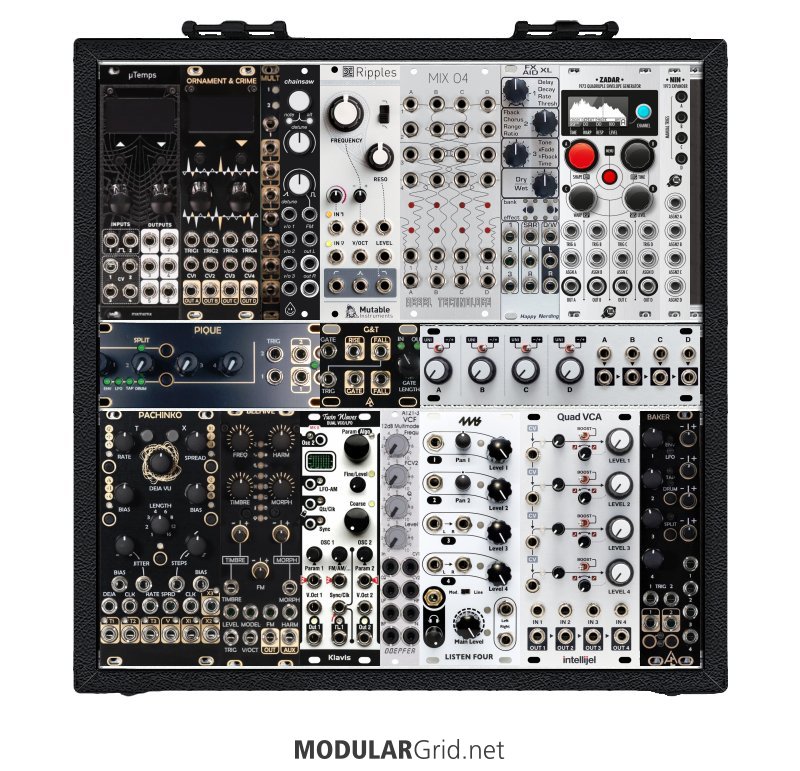what sort of music do you intend to make?
do you already have the 19" rack?
do you have more than 9u free? whilst you may see this dream rack as 'end game' there's a very good chance it won't be - and you are not planning in room for possible expansion
you don't need 3 uZeus rack warts - just 2 and 1 of the boost power supplies - also saves 4hp
personally I would try to go with a power supply that will power all three rows from a single power supply - there are plenty to choose from - and if possible avoid the rack warts all together - may involve drilling holes in the 19" - I'd drill the holes and use a couple of befaco excalibuses to power this rack myself - this would save 12 hp!
'reasonably' well balanced - things I would try to do though:
get a midi interface with more channels - befaco do a reasonbaly, priced one that has 8 outs in 6hp iic
swap both the intellijel quad vca and veils for new veils - which will save 4hp - remember these are mixers too and that they can be used for cv as well as audio and as input modules - they have +20dB of gain - so you can probably drop the input module
you have quite a few 2hp modules - which can be great, but, they appear to be in places where they might be awkward to use and make using other modules difficult - getting a couple in the first row is probably a good idea - so you can determine if you actually like them before getting more
rene is quite a big module in this size case imo - but it may be the feature module that you want, idk
I'm not sure that you need to have 4 modulation sources - I would rather have fewer and have interesting ways of multing/modifying/mixing them rather than a lot of different ones - I'd grab a kinks (immediately whilst they may still be available) and a matrix mixer, possibly 2 - probably in place of stages and contour 1 - although I do really like stages - so I would probably try to keep this - maths I would definitely keep - download the illustrated supplement and work your way through it a few times - it's a great modular learning resource
I would seriously think out your mixing - it doesn't make a lot of sense to me - especially the 'end of chain' audio mixing xpan and the addac? you could probably find a better solution for that in a single module
I'd also consider replacing the dual fx with a fx aid xl - smaller and more versatile!
"some of the best base-level info to remember can be found in Jim's sigfile" @Lugia
Utility modules are the dull polish that makes the shiny modules actually shine!!!
sound sources < sound modifiers < modulation sources < utilities




